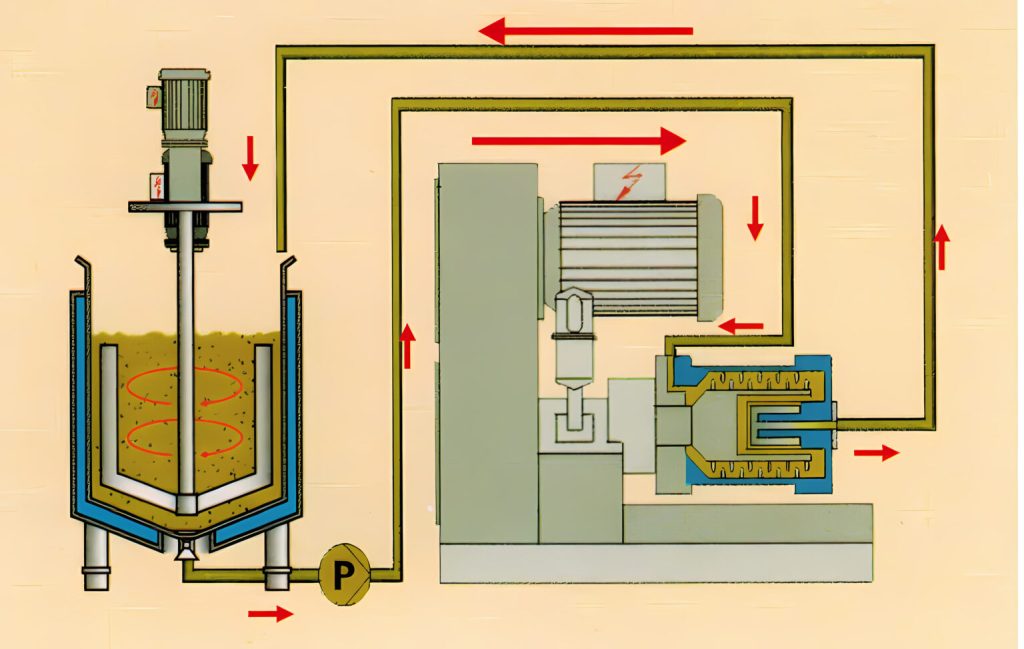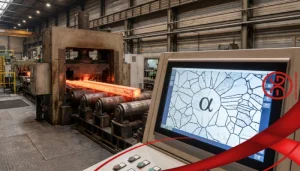Sand mills are advanced grinding machines designed for ultra-fine particle size reduction, widely used in industries like paints, coatings, inks, and chemicals. These high-efficiency mills excel at producing uniform, nano-scale particles, making them essential for applications requiring smooth textures and consistent quality. This article from Alpha Grinding Media examines sand mills, how they work, their applications, benefits, and practical strategies for optimizing their performance in industrial processes.
What Is a Sand Mill?
A sand mill, also known as a bead mill, is a high-speed grinding machine that uses small beads (originally sand, now typically ceramic or glass) as grinding media to reduce materials to very fine particle sizes, often in the nanometer range. Unlike traditional ball mills, sand mills operate with high agitation and are designed for wet grinding, making them ideal for liquid-based applications.
Key Components of a Sand Mill
- Grinding Chamber: A cylindrical vessel where the material and beads are mixed and ground.
- Grinding Media: Small beads (0.1–3 mm) made of ceramic, glass, or zirconia, chosen for their durability and grinding efficiency.
- Agitator: A high-speed rotor or disc that agitates the beads, creating intense shear and impact forces.
- Cooling System: Maintains low temperatures during high-speed grinding to prevent material degradation.
- Separation System: Screens or gaps that allow fine particles to exit while retaining beads.
Types of Sand Mills
- Horizontal Sand Mills: Common in industrial settings, offering high throughput and easy maintenance.
- Vertical Sand Mills: Compact and suitable for smaller-scale operations or laboratories.
- Basket Sand Mills: Combine grinding and mixing in a single unit, ideal for batch processing.
Sand mills are primarily used in industries requiring ultra-fine grinding, such as paints, inks, and pharmaceuticals.
How Sand Mills Work
Sand mills operate by agitating a mixture of material, liquid, and grinding beads at high speeds within a sealed chamber. The process involves:
- Agitation: The rotor or disc spins at 1,000–3,000 RPM, causing the beads to collide with the material and create shear and impact forces.
- Particle Reduction: These forces break down particles into sizes as small as 100–500 nanometers, depending on the application.
- Wet Grinding: The material is suspended in a liquid (e.g., water or solvent), which facilitates fine grinding and prevents clogging.
- Separation: Fine particles pass through a screen or gap, while beads remain in the chamber for reuse.
For example, in paint production, a sand mill might process pigment dispersions to achieve a particle size of 200–300 nm, ensuring a smooth, glossy finish.
Applications of Sand Mills
Sand mills are versatile and widely used in industries requiring ultra-fine grinding. Key applications include:
- Paints and Coatings
Pigment Dispersion Sand mills grind pigments into nano-scale particles for vibrant, uniform paint and coating formulations.
Example: A horizontal sand mill can process 500 liters/hour of paint, achieving a fineness of 200 nm for high-gloss finishes. - Inks
Printing Inks: Produces fine, consistent ink particles for high-quality printing in magazines, packaging, and textiles.
Example: Sand mills ensure ink particles below 500 nm, improving print clarity and color intensity. - Chemicals and Agrochemicals
Pesticides and Fertilizers: Grinds active ingredients into fine particles for better absorption and effectiveness.
Example: A sand mill can process pesticide suspensions to 300 nm, enhancing sprayability and efficacy. - Pharmaceuticals and Cosmetics
Drug Formulations: Reduces active pharmaceutical ingredients (APIs) to nano-scale for improved bioavailability.
Cosmetics: Creates smooth textures for creams, lotions, and lipsticks.
Example: In cosmetics, sand mills achieve particle sizes below 500 nm for silky-smooth products. - Nanotechnology
Nanomaterials: Produces nanoparticles for advanced materials like graphene or carbon nanotubes.
Example: A lab-scale sand mill can grind materials to 100 nm for research applications.
Sand mills are critical for industries where particle size and uniformity directly impact product quality.
Benefits of Sand Mills
Sand mills offer distinct advantages over other grinding technologies:
- Ultra-Fine Grinding: Achieve particle sizes in the nanometer range (100–500 nm), ideal for high-quality products.
- High Efficiency: High-speed agitation ensures rapid processing, reducing production time.
- Uniform Particle Size: Produces consistent particle size distributions, critical for paints, inks, and pharmaceuticals.
- Versatility: Suitable for a wide range of viscosities and materials, from low-viscosity inks to high-viscosity pastes.
- Energy Efficiency: Advanced designs minimize energy consumption compared to traditional mills.
These benefits make sand mills a preferred choice for industries requiring precision and consistency.
Conclusion
Sand mills are cutting-edge tools for ultra-fine grinding, delivering nano-scale particles for industries like paints, inks, pharmaceuticals, and nanotechnology. Their ability to produce uniform, high-quality dispersions makes them indispensable for applications requiring precision and consistency. By selecting the right grinding media, optimizing agitation speed, controlling viscosity, and maintaining equipment, you can maximize sand mill efficiency and achieve superior results. Whether you’re producing glossy paints or advanced nanomaterials, understanding sand mill technology empowers you to elevate your production processes and meet industry demands.
Frequently Asked Questions
1. What materials can a sand mill process?
Sand mills can process pigments, inks, coatings, pharmaceuticals, agrochemicals, and nanomaterials. They are ideal for liquid-based dispersions requiring particle sizes in the 100–500 nm range.
2. How does a sand mill differ from a ball mill?
Sand mills use small beads (0.1–3 mm) and high-speed agitation for ultra-fine wet grinding, while ball mills use larger balls (10–100 mm) for coarser grinding in both wet and dry applications.
3. How can I prevent overheating in a sand mill?
Use cooling jackets to maintain chamber temperatures below 50°C, reduce agitation speed for heat-sensitive materials, and ensure proper material viscosity to minimize friction.
4. What is the best grinding media for sand mills?
Zirconia or ceramic beads (0.1–1 mm) are ideal for high-purity, ultra-fine grinding due to their durability and low contamination. Glass beads are a cost-effective option for less critical applications.





